Return to Homepage Return to Dixie Caverns page
Speleothem are a range of depositional karst features often found in caves. Some of the most common include stalactites, stag mites, columns, soda straws, drapery, and flowstones.
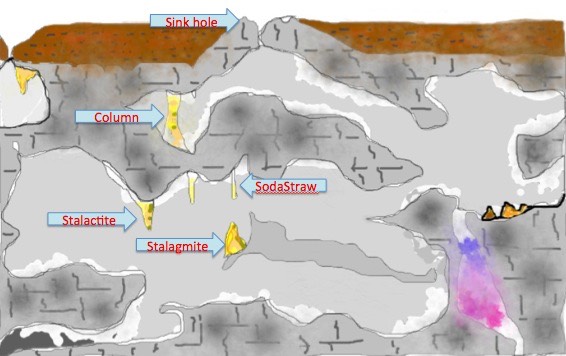
These features are all found in Dixie Caverns.

The following are all examples of different features found on the tour of Dixie Caverns.
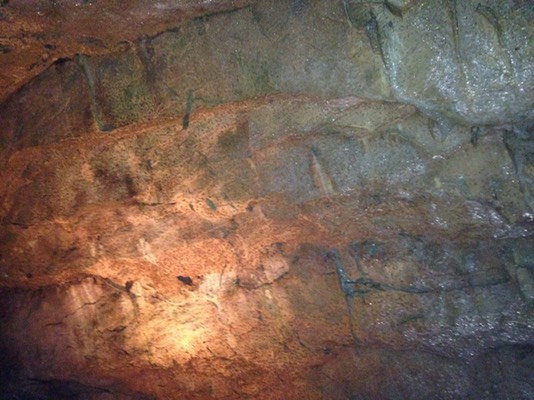
In the opening area of Dixie Caverns there are a series of drapery. (Yes, it is hard to take good pictures in a cave!) Each of the wavy looking deposits is an example of the drapery. There are four rows of it visible above.
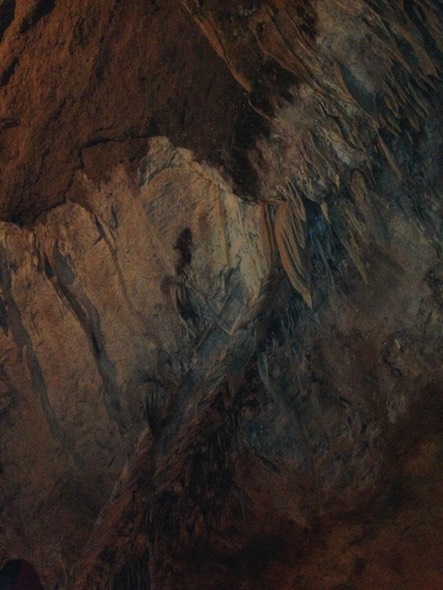
There is a fault that runs through Dixie Caverns. Where you have a fault there will be fractures in the rock. Water will move more easily through these fractures. The fault is visible as the line of stalactites and flowstones seen above. The fault runs from botton left to top right of the photograph.
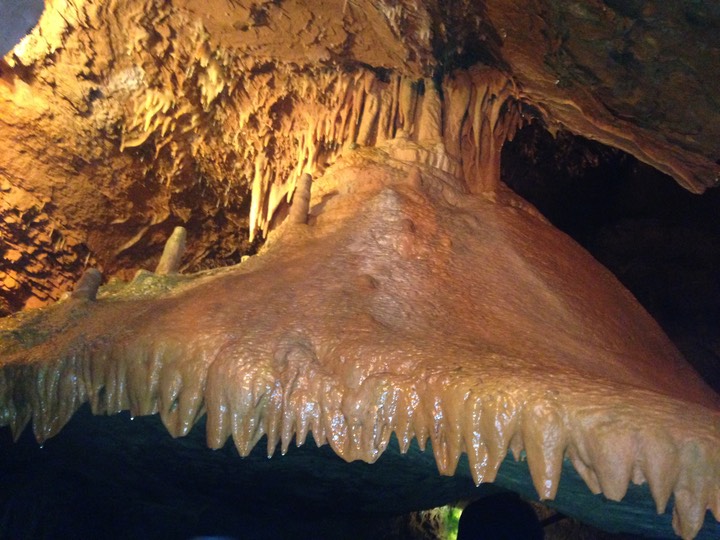
The image above is a massive flowstone they call The Wedding Bell. A number of wedding ceremonies have taken place under this 57 ton structure. On the top of the photograph you can see drapery (the undulating structures) and stalactites. The thinnest of the structures are soda straws. They are hollow, and may someday "fill in" to become stalactites. On the upper surface of the wedding bell, on the left side of the photograph, you can see stalagmites growing upwards. Many of the speleothem were broken off in the 1920s and 1930s, but someday, after they recover for a few hundred years, they may join the stalactites above to form columns.
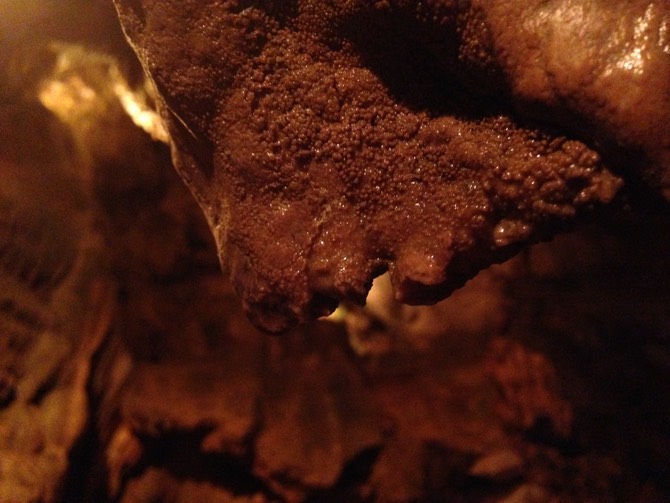
Above is an image of a segment of a soda straw. You can see the hollow end of it.
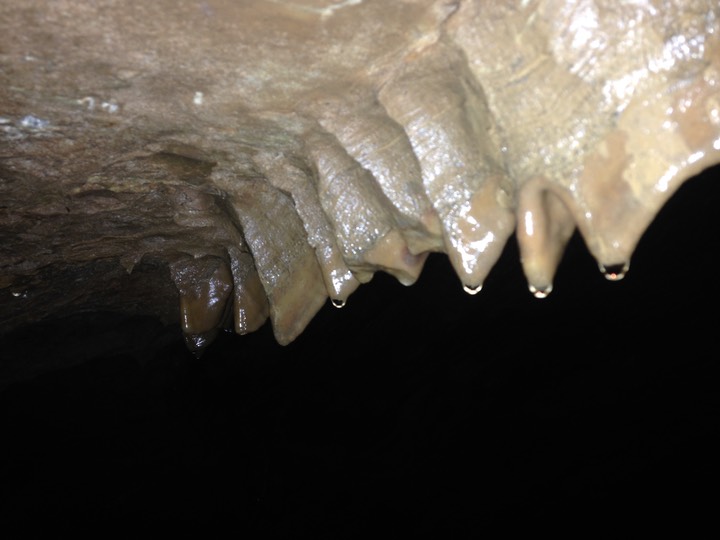
Along the lower edge of the Wedding Bell is a line of drapery. The photograph above is taken from under the bell. You can see the thin laminations that mark different episodes of deposition. Like tree rings, these can be used, in part, to get the age of the drapery. You see water drops along the bottom of each point along the drapery. These have infiltrated the limestone forming the cave and down the flowstone. They may precipitate calcite along the base of the drapery and, in such, will enable the drapery to grow
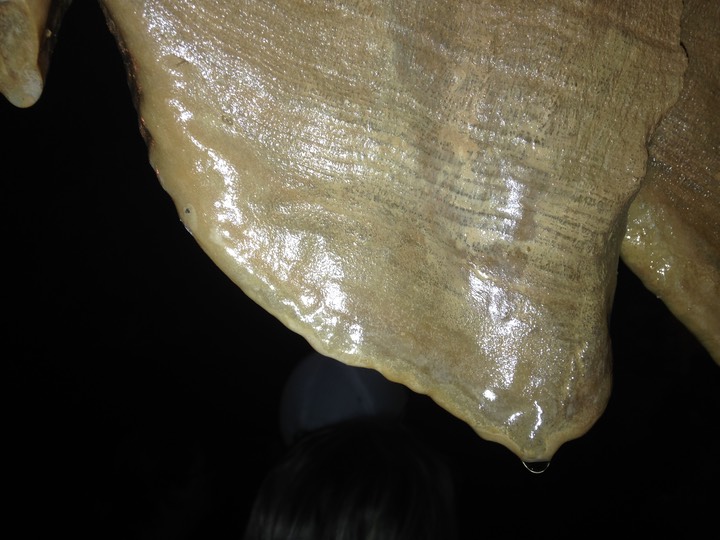
A closer view of one section of the drapery.
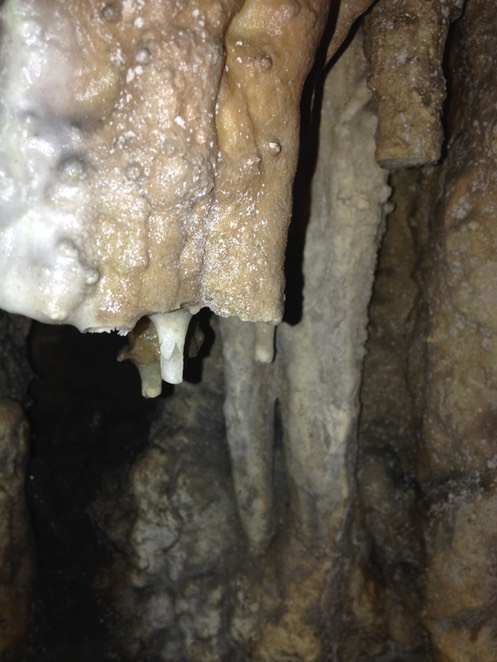
It takes about 100 years for the speleothem to grow an inch. As mentioned earlier, in the 1920s people used to break off sections of the speleothem.The thick section above shows one of those broken segments. The thin, small stalactite growing from that represents the extent of growth by 2013. It has only grown back about an inch in the 93 or so years since it was damaged.